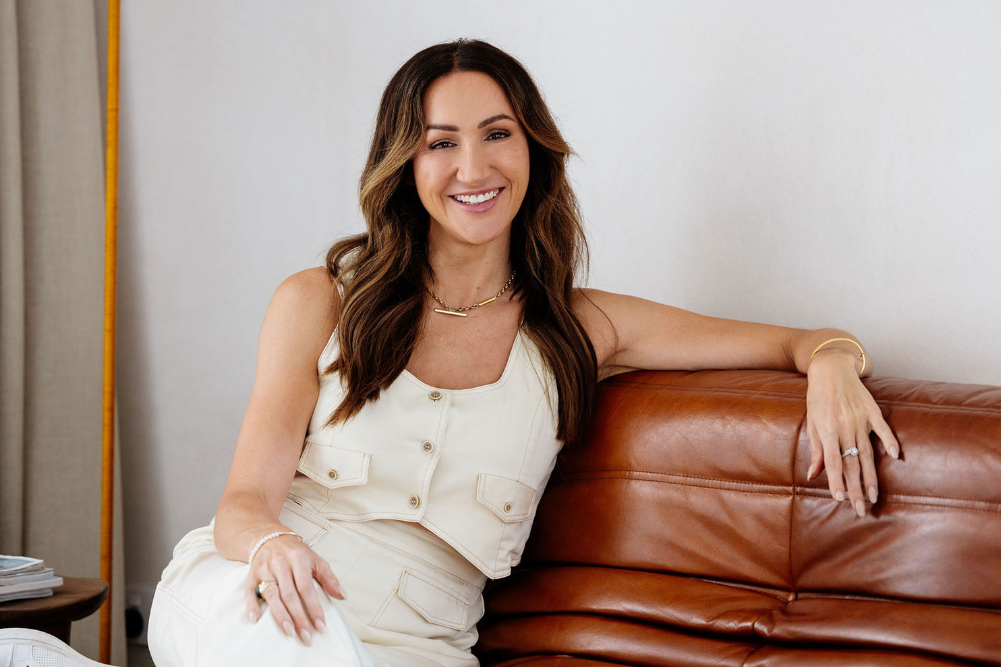Permaculture paradise at The Ridge on Binna burra
I’m standing on a beautiful ridge of land — the cleared remnants of a dairy farm — that runs along an escarpment, which is surrounded by the Lamington National Park. To the east, across the rolling heavily forested hills, is the jumble of the Gold Coast. Above me a flock of white cockies rises and flies out over the edge. Way down below, bellbirds croon in the rain forest.
There’s a vision taking shape up here, one of idealism driven by realism, a daring combination of dreaming and scheming that might just work. It will show us the way to live without creating more destructive environments — like the one located just over the mountains and not so far away.
The project is called The Ridge on Binna Burra and one of the dreamers involved in it is an environmentally and spiritually born-again refugee from the hospitality industry, Alastair McCracken. He has spent more than 30 years working for large hotels around Australia, including Couran Cove, one of Australia’s first integrated ecotourism projects.
The Ethos Foundation, which has created the idea of The Ridge, was founded in 2003, first with McCracken and kinesiologist Phillip Crockford and later with Brisbane businessmen Tim Medhurst and John O’Brien and Sally McKinnon, whose Gondwana Centre, a non-profit adult ecological education centre was already operating at Binna Burra.
When the members of the Ethos foundation accidentally met with Sally at Binna Burra Lodge, they realised their goals of promoting sustainability, holistic education and land care were similar and so joined forces.
McCracken and Crockford visited the Esalen Institute in California, Hollyhock, an educational retreat centre in Canada, and the Omega holistic teaching centre in New York State and the plan began to take shape. But with a difference. First, they had to find land. “The land actually chose us,” says McCracken. “We’d travelled as far afield as Kenilworth (Qld) in the north to Port Macquarie in NSW and very nearly bought the old Peppers resort at Byron Bay. But the universe told us it wasn’t the right place to be.”
Through Sally McKinnon, they found the right place. “She told us about this land, 40 acres on the escarpment and 200 acres of rainforest below it,” McCracken explains. “A developer had bought it, carved off some two-acre lots and sold them in the 70s. In 1984, he sought approval to build a Japanese gold resort — sadly he died before he got it. The locals said they’d been ‘whitelighting’ it — putting their energy in to make sure the right use came for it. Hopefully, we’re the right use.”
Now for the interesting bit. How do you go about building a carbon-neutral village with an organic university at its centre, utilising permaculture principles, including the food gardens, the houses for sale and the village for teachers and workers surrounding it? That’s where good business practice comes in.
“The first step of sustainability is financial viability,” says McCracken. “There are hundreds of places in Australia where people started out with a huge vision, wonderful purpose and great ideals, but they haven’t had the business acumen to make it work. So we came up with a business model first and said that will underpin everything: how do we make it work? There’s no point in being the most sustainable business on the planet if you go broke.”
Anybody who buys into this project is buying a lot more than an attractive house in a permaculture village. “As well as the building, the residents collectively own all the land — including the rainforest. One of the Ethos Foundation presenters, Professor John Williams (Wentworth Group of Scientists, previously chief of CSIRO Land & Water) said what attracted him to the community was the collective ownership of the rainforest — he believes in private ownership of a buffer zone around a national park that includes a preservation order. And that’s what happens up here.”
This project is being built from the soil up, which requires special expertise in the form of Tom Cammano, the project landscape designer and environmental project director, and Morag Gamble, a permaculture teacher and designer who has worked in 20 countries around the world, including Cuba, Turkey and Indonesia. She’s also one of the directors of the Northey Street Market and City Farm in Brisbane. Gamble took me through the living environment being created on the ridge.
“There are two ways of thinking about permaculture,” she tells me. “Most people think of the food gardens we’re planting. My perception is much broader — how you integrate with the local community, how you fit in with the local economic system, how you weave in the Indigenous culture and landscape.
“The principles of permaculture will be an underlying part of how the whole place is developed. I’ve been sitting around the table with the entire crew — architects, engineers, from early on in the planning process to keep the permaculture process at the forefront.”
McCracken, Gamble and Cammano are sketching out the project in broad strokes, showing me how the building and structures will be kept away from gully lines, how water courses will be protected and will flow naturally to form dams and waterways. They describe the artists’ walks and the food walks and the integrated polyculture with chickens and ducks forming part of the closed circle of food production. I feel my cynical gear engaging. Standing in this perfect place, I ask the difficult question.
“Sri Rama Krishna was asked why there was evil in the world. ‘To thicken the plot,’ he replied. You’re attempting to build a Utopia up here. And we all know what happens to utopias. How are you going to thicken the plot?”
Cammano was the first to respond. “It’s tempting to think of this place as some kind of Shangri-La where everything’s perfect and we just drift and, of course, we’d get frustrated and things would go wrong if that was the case. But what we build here will still require engagement and constant conversation. It’s participation that’ll be the thickener and the glue.”
“Creation of Utopia has been an obsession for a long time,” says McCracken. “The 20th century is an attempt to create Utopia — an urban model, a food delivery model, an economic, social and financial system. We’re trying to pick out the bits that work and put them in a place of connection and reality. But you can’t escape the fact that for a good many people, a Walmart and a credit card with a $10,000 limit is Utopia.
“Look, our notion is that people obviously have to move to lower consumption, and that continued (capitalist) growth is just no longer possible — it’s unsustainable,” continues McCracken. “But you can’t drag people kicking and screaming to that realisation. What we want to do is show them there is an option. Here is a way. Here is a place that’s good to be in and be a part of and you lose nothing by living this way. In fact you gain.”
I get the feeling that if anyone can make this vision happen, these people can. Who would have thought — a green future just up the hill from the gold Coast?
John Newton is a freelance writer, journalist and novelist. He writes about food, farming and associated environmental issues. He is also co- editor of the restaurant guide Sydney Eats. His most recent award was the Gold Ladle for Best Food Journalist in the 2005 World Food Media Awards.
For more information, visit:
www.theridgebinnaburra.com
www.ethosfoundation.org
www.gondwanacentre.org.au







